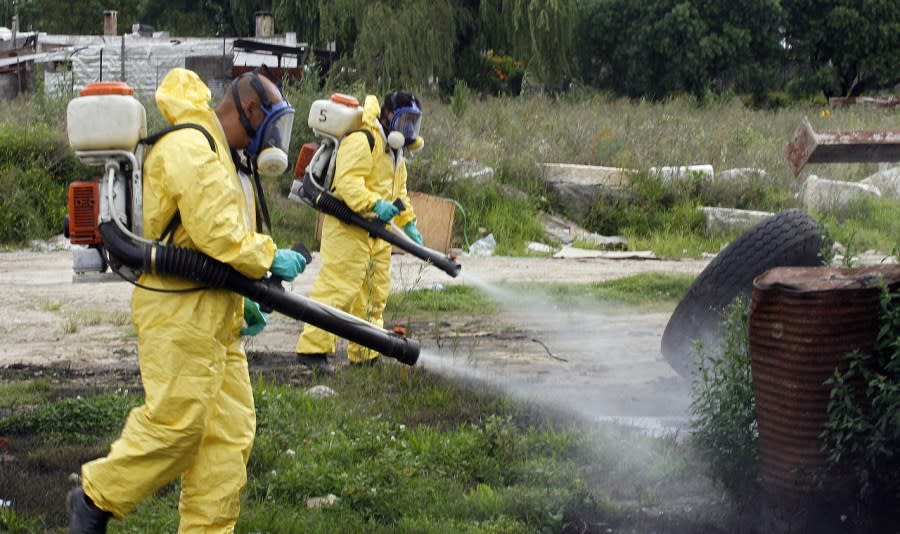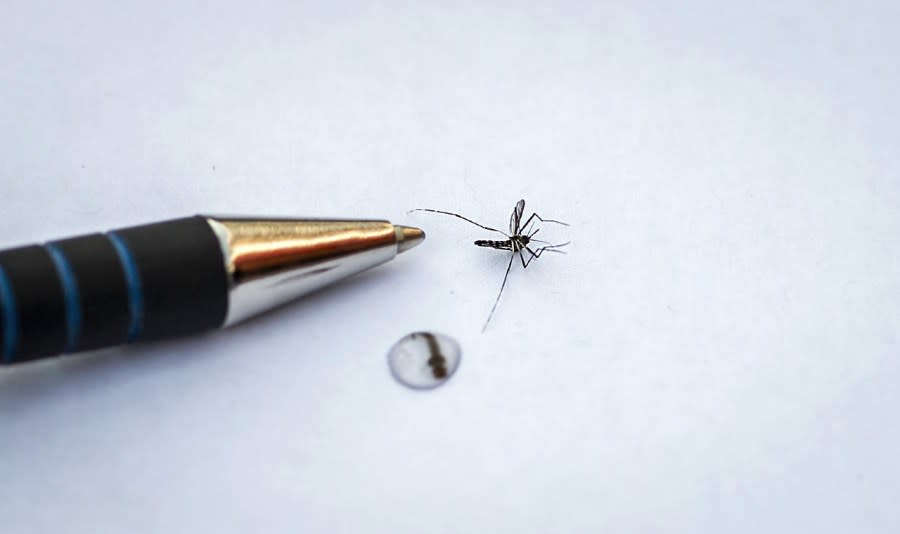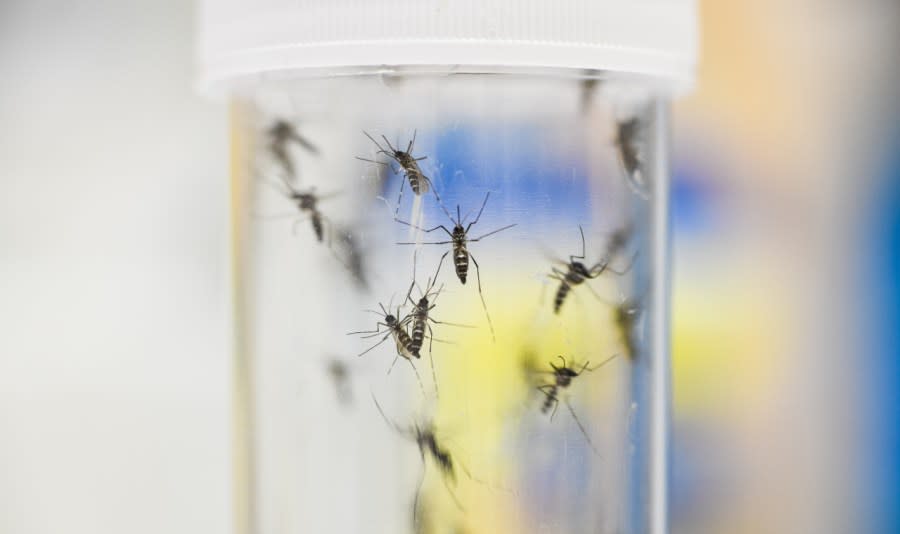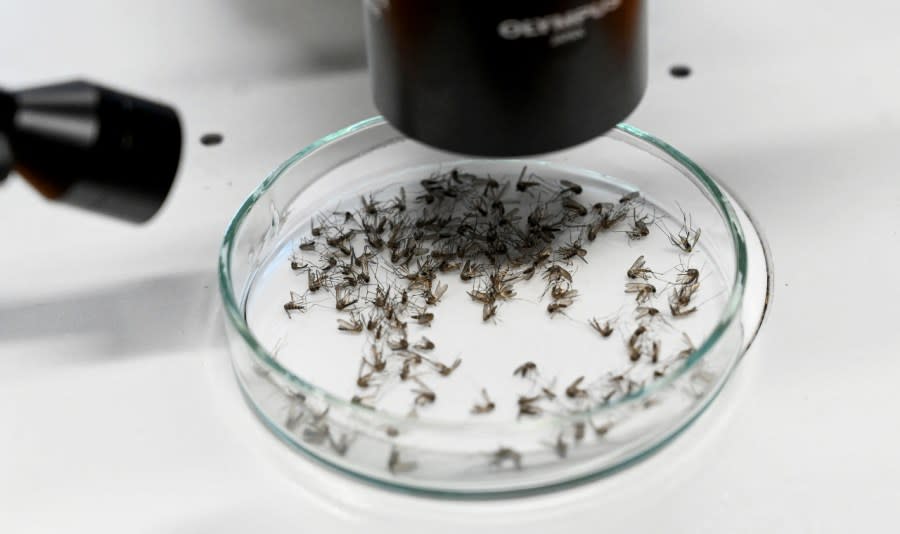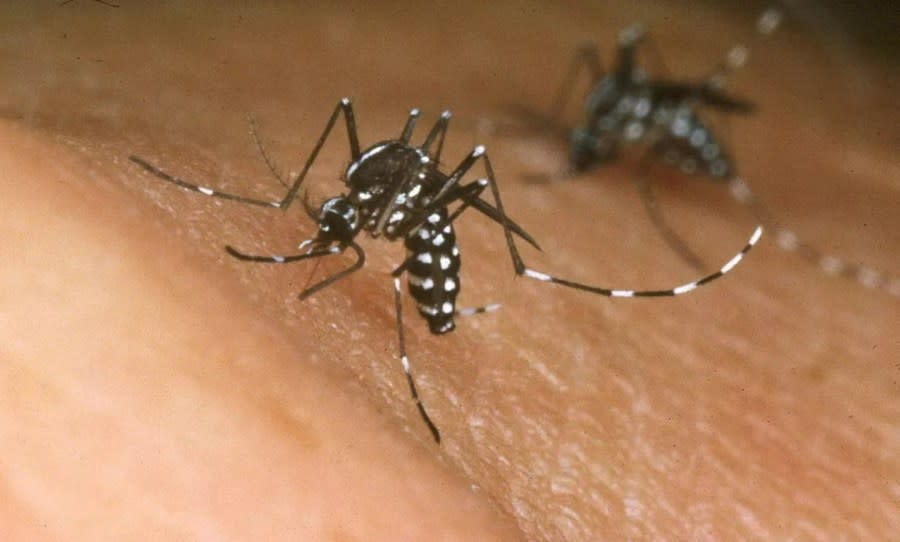Study: 2 new mosquito species moving toward Michigan, potential for more diseases

GRAND RAPIDS, Mich. (WOOD) — A warming climate is expected to bring more than just milder winters to West Michigan. A new study shows two invasive mosquito species are making their way farther north into the Great Lakes region and the potential for more mosquito-borne viruses, including Zika, dengue and yellow fever.
The tiger mosquito and yellow fever mosquito are not new to the United States but have never had established populations in Michigan. The tiger mosquito (aedes albopictus) was accidentally imported from Asia in the late 19th century and is considered the most “invasive” mosquito in the world. The yellow fever mosquito (aedes aegypti) came over from Africa in the 17th century.
Invasive locust intercepted by border agents in Detroit
Both bugs have established populations in the southeastern United States and in pockets across the southwest U.S. Previously, the Midwest’s cold winters had kept them at bay. Now, warmer conditions are allowing them to creep farther north. And as climate change promotes more severe storms, additional flooding is expected to generate more “microhabitats” — leaving standing water where mosquitos can breed.
Marie Russell, a postdoctoral fellow with the Oak Ridge Institute for Science and Education in Tennessee, led the study alongside Environmental Protection Agency biologists. It was published in June’s edition of EcoHealth. Russell says we could see the two mosquitos as soon as next summer, and current trends have populations established within 20 to 30 years.
“(The tiger mosquito) is already established in Windsor, Ontario, and (the yellow fever mosquito) has already been introduced. We don’t think they are successfully overwintering in the area yet,” Russell told News 8.
DNR: Now is the time to prune your oak trees, avoid oak wilt
While they appear to be migrating in tandem, there are a lot of differences between the two species. The tiger mosquito is more adaptable to the cold than the yellow fever mosquito, while the yellow fever mosquito prefers urban areas and strongly prefers to feed on humans.
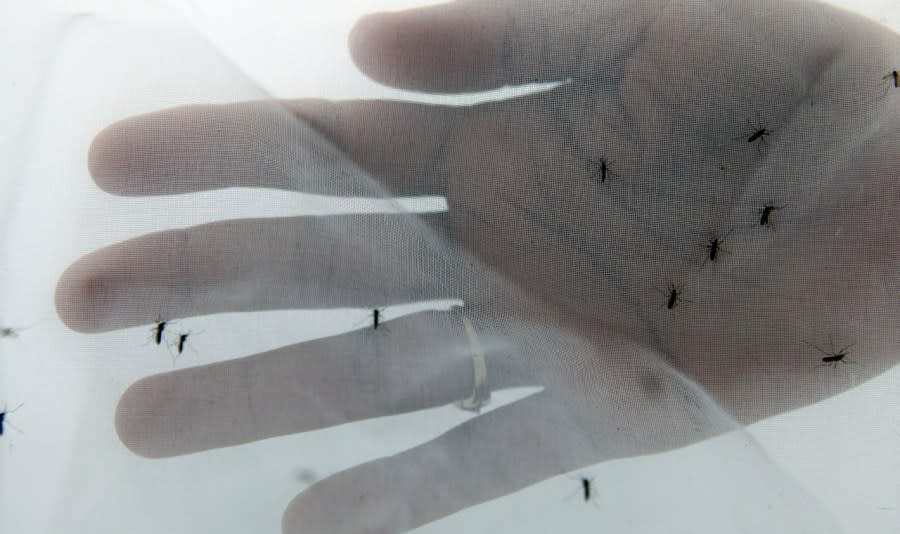
“From a public health standpoint, (the yellow fever mosquito) is more concerning because it has a higher likelihood to be a disease vector to humans,” Russell explained.
The two species have been known to pass along several dangerous viruses. However, Russell urged people to understand that even an established population of these insects does not mean outbreaks are inevitable, only that they could be possible.
“The (insect) has to be there for these diseases to be transmitted to humans, but having the vector there doesn’t necessarily mean that you’ll immediately have a disease outbreak. But it definitely increases the risk,” she said.
Beyond Brandon Road: Monitoring 18 other points invasive carp could enter Great Lakes
Zika virus made headlines in 2015 and 2016 after outbreaks in the Central and South America bled across the border. In 2016, nearly 5,000 Americans contracted Zika while traveling and 224 cases were confirmed to be spread locally in Florida and Texas. There has not been a locally spread case of Zika since 2017, according to the Centers for Disease Control and Prevention.
This 2007 file photo shows employees with Uruguay’s Ministry of Health spraying an insecticide to try and eliminate local populations of yellow fever mosquitos that led to an outbreak of dengue. (Getty Images file) Tiger mosquitoes are being studied all across the world for the type of viruses they can transmit. (Getty Images/AFP/Remko De Waal) A 2019 file photo shows German researchers at the Friedrich Loeffler Institute studying tiger mosquitoes. (Getty Images file) Researchers at Croatia’s Institute of Public Health study a group of dead tiger mosquitos. (Getty Images/AFP/Denis Lovrovic) A tiger mosquito, aedes albopictus, is native to Southeast Asia but has since spread across parts of the world and is now slowly moving toward the Great Lakes region. (Getty Images file)
Dengue infections are much more common. The World Health Organization estimates between 100 million and 400 million people are infected by the virus each year. There is a vaccine available to protect people, but outbreaks still pop up regularly, including in the United States. Locally spread dengue outbreaks have been confirmed in Florida, Hawaii, Texas and Arizona, although the CDC says they “have been relatively small and limited.”
Yellow fever has had little impact in the United States in recent decades, although there were several epidemics in the 18th and 19th centuries. According to the CDC, wide ranges of South America and Africa are at risk, and travelers are urged to get vaccinated before spending time there. While vaccines have proven safe and effective, there is no current treatment for yellow fever, and between 20% to 50% of people who develop a serious infection will die from the virus.
Sign up for breaking news alert emails
Emily Dinh, a medical entomologist with the Michigan Department of Health and Human Services, said its department knows of the current trends and is confident the state’s current methods of monitoring and testing mosquitos will keep health officials ahead of any potential outbreaks.
“We work with local health departments who are looking for these mosquitos and basically acting as sentinels,” Dinh told News 8.
With no established population, Dinh and their team can afford to focus on specific breeding grounds to prevent the insects from multiplying.
“It really is a systematic problem,” Dinh said. “Some states have very detailed policies (for certain businesses or facilities that tend to serve as key breeding grounds). This is the sort of mosquito control that this sort of facility is expected to provide. And it’s not just because of my concerns as a public health expert, but also for the safety of the workers who work in these environments every day.”
Even as these new mosquito species make their way into Michigan, the guidelines for best practices to avoid bites should stay the same. Wear long sleeves and light colors, especially near dawn and dusk, use EPA-registered insect repellents and avoid allowing any standing water near your home.
Editor’s Note: The tiger mosquito is also commonly referred to as the Asian tiger mosquito. Several researchers and organizations have removed the word Asian from the name to avoid tying negative connotations to people of Asian descent.
For the latest news, weather, sports, and streaming video, head to WOODTV.com.
